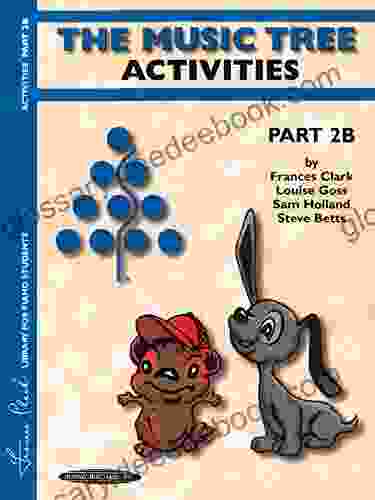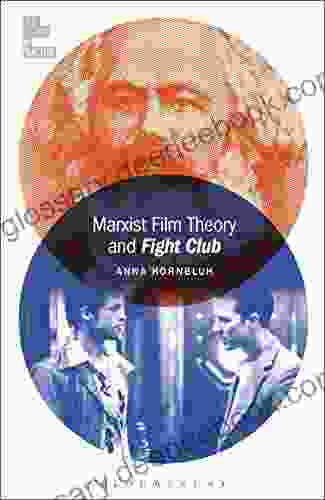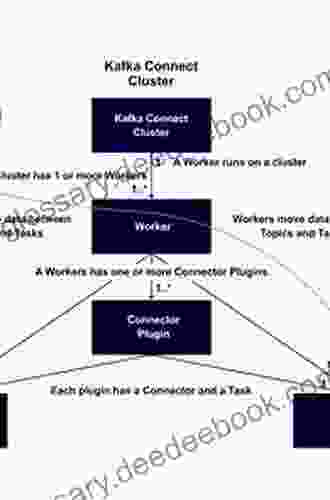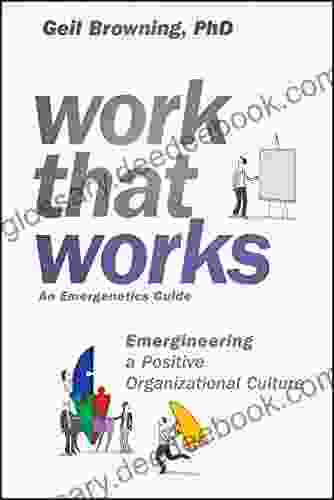The Information Architecture of Discovery: An In-Depth Exploration of the Principles and Best Practices for Organizing and Presenting Information

In the ever-expanding digital landscape, where information abounds, the ability to discover the information we need quickly and efficiently has become paramount. Information architecture (IA) plays a pivotal role in empowering users to navigate through vast amounts of information and find what they are looking for with ease. This in-depth guide will delve into the principles, best practices, and practical techniques of IA, providing a comprehensive understanding of how to organize, structure, and present information in a user-centric manner.
4.4 out of 5
| Language | : | English |
| File size | : | 8050 KB |
| Text-to-Speech | : | Enabled |
| Screen Reader | : | Supported |
| Enhanced typesetting | : | Enabled |
| Print length | : | 558 pages |
Principles of Information Architecture
The foundation of effective IA lies in a set of fundamental principles that guide the organization and presentation of information. These principles include:
- User-centricity: IA should always prioritize the needs and goals of the users. The structure and organization of information should be tailored to their cognitive processes and mental models.
- Findability: Information should be easy to find. Users should be able to locate the information they need without encountering unnecessary obstacles or confusion.
- Accessibility: IA should ensure that information is accessible to all users, regardless of their abilities or disabilities. Content should be presented in a clear and concise manner, and alternative formats should be provided when necessary.
- Consistency: The structure and organization of information should be consistent throughout the website or application. This helps users develop mental models and navigate the information space more efficiently.
- Flexibility: IA should be flexible enough to accommodate changes in content and user needs over time. The structure and organization of information should be adaptable to new requirements without compromising usability.
Best Practices for Information Architecture
Building upon these fundamental principles, there are a number of best practices that can be followed to enhance the effectiveness of IA. These practices include:
- Use clear and concise language: The language used to label and describe information should be clear, concise, and easily understandable by users.
- Create a logical hierarchy: Organize information into a logical hierarchy that reflects its relationships and importance. This helps users navigate the information space more effectively.
- Use navigation elements effectively: Navigation elements, such as menus, breadcrumbs, and search bars, should be placed prominently and designed to facilitate easy navigation.
- Provide metadata: Metadata, such as tags, categories, and descriptions, can help users refine their search and discover relevant information more easily.
- Test and iterate: Information architecture should be tested with users to ensure that it is effective and meets their needs. Iterative design and feedback loops are crucial for refining IA and improving usability.
Practical Techniques for Information Architecture
In addition to general principles and best practices, there are a number of practical techniques that can be employed to enhance the effectiveness of IA. These techniques include:
- Taxonomy and ontology: Taxonomies and ontologies are structured vocabularies that can be used to organize and classify information. They help users navigate the information space more efficiently and find related information.
- Controlled vocabulary: Controlled vocabularies are lists of approved terms and phrases that are used to describe information. They help ensure consistency and accuracy in the labeling and description of information.
- Faceted search: Faceted search allows users to filter and refine their search results based on specific attributes or facets of the information.
- Site search: Site search provides users with a quick and easy way to find information within a website or application.
- Information visualization: Information visualization techniques, such as charts, graphs, and maps, can be used to present complex information in a visually appealing and easy-to-understand manner.
Benefits of Effective Information Architecture
Effective information architecture offers numerous benefits for both users and organizations. These benefits include:
- Improved user experience: Effective IA makes it easier for users to find the information they need, leading to a more satisfying and productive experience.
- Increased productivity: By reducing the time and effort required to find information, effective IA can help users become more productive and efficient.
- Enhanced customer satisfaction: When users can easily find the information they need, they are more likely to be satisfied with their experience and return to the website or application.
- Reduced support costs: Effective IA can help reduce support costs by providing users with the information they need to solve problems on their own.
- Improved search engine optimization (SEO): Well-structured IA can help improve SEO by making it easier for search engines to crawl and index content.
Information architecture plays a critical role in empowering users to discover the information they need quickly and effectively. By adhering to the principles, best practices, and practical techniques outlined in this guide, organizations can create information spaces that are user-centric, findable, accessible, consistent, and flexible. Effective information architecture not only enhances the user experience but also leads to increased productivity, customer satisfaction, and business success.
4.4 out of 5
| Language | : | English |
| File size | : | 8050 KB |
| Text-to-Speech | : | Enabled |
| Screen Reader | : | Supported |
| Enhanced typesetting | : | Enabled |
| Print length | : | 558 pages |
Do you want to contribute by writing guest posts on this blog?
Please contact us and send us a resume of previous articles that you have written.
 Book
Book Novel
Novel Page
Page Chapter
Chapter Genre
Genre Paperback
Paperback E-book
E-book Magazine
Magazine Newspaper
Newspaper Paragraph
Paragraph Shelf
Shelf Glossary
Glossary Bibliography
Bibliography Foreword
Foreword Preface
Preface Annotation
Annotation Manuscript
Manuscript Scroll
Scroll Tome
Tome Bestseller
Bestseller Classics
Classics Library card
Library card Autobiography
Autobiography Narrator
Narrator Card Catalog
Card Catalog Stacks
Stacks Archives
Archives Study
Study Research
Research Scholarly
Scholarly Lending
Lending Reserve
Reserve Journals
Journals Study Group
Study Group Thesis
Thesis Dissertation
Dissertation Awards
Awards Book Club
Book Club Theory
Theory Textbooks
Textbooks Lynne Benton
Lynne Benton Ann Garcia
Ann Garcia Jane Mcleod
Jane Mcleod Kimberly Derting
Kimberly Derting Chris Denove
Chris Denove Lilian Jackson Braun
Lilian Jackson Braun Julia Jarrett
Julia Jarrett Sam Kogan
Sam Kogan Peter Gay
Peter Gay Ann Rinaldi
Ann Rinaldi Nicholas Lemann
Nicholas LemannJohn Winstanley
 J J Bergquist
J J Bergquist Jerry Doyle
Jerry Doyle Mike Estall
Mike Estall Tony Russell Rose
Tony Russell Rose Mary Pope Osborne
Mary Pope Osborne Melvin A Taylor
Melvin A Taylor Eyal Schwartz
Eyal Schwartz Doug Motel
Doug Motel
Light bulbAdvertise smarter! Our strategic ad space ensures maximum exposure. Reserve your spot today!

 Julio Ramón RibeyroThe Music Tree Activities Part 2b: Exploring the World of Music Creation
Julio Ramón RibeyroThe Music Tree Activities Part 2b: Exploring the World of Music Creation Chad PriceFollow ·3.2k
Chad PriceFollow ·3.2k Quentin PowellFollow ·7.1k
Quentin PowellFollow ·7.1k Jake CarterFollow ·7k
Jake CarterFollow ·7k Langston HughesFollow ·3.9k
Langston HughesFollow ·3.9k Mark TwainFollow ·11.1k
Mark TwainFollow ·11.1k Dwayne MitchellFollow ·6.1k
Dwayne MitchellFollow ·6.1k Caleb CarterFollow ·14.2k
Caleb CarterFollow ·14.2k Nick TurnerFollow ·13.8k
Nick TurnerFollow ·13.8k

 Desmond Foster
Desmond FosterTravesti Life in the Favela: An Exploration of Identity,...
In the bustling...

 Bobby Howard
Bobby HowardCorruption and Development in South Korea and the...
Corruption is a major...

 George Martin
George MartinGaslighting, Blame Shifting, and Consent in Marriage: A...
Gaslighting,...

 Grayson Bell
Grayson BellOne Witch at a Time: Dive into the Enchanting World of...
Welcome to the Mystical Realm of...

 James Hayes
James HayesLatino Mass Mobilization: Immigration, Racialization, and...
Latino mass...

 August Hayes
August HayesMarxist Film Theory and Fight Club: A Long-Tail...
Marxist film theory,...
4.4 out of 5
| Language | : | English |
| File size | : | 8050 KB |
| Text-to-Speech | : | Enabled |
| Screen Reader | : | Supported |
| Enhanced typesetting | : | Enabled |
| Print length | : | 558 pages |










